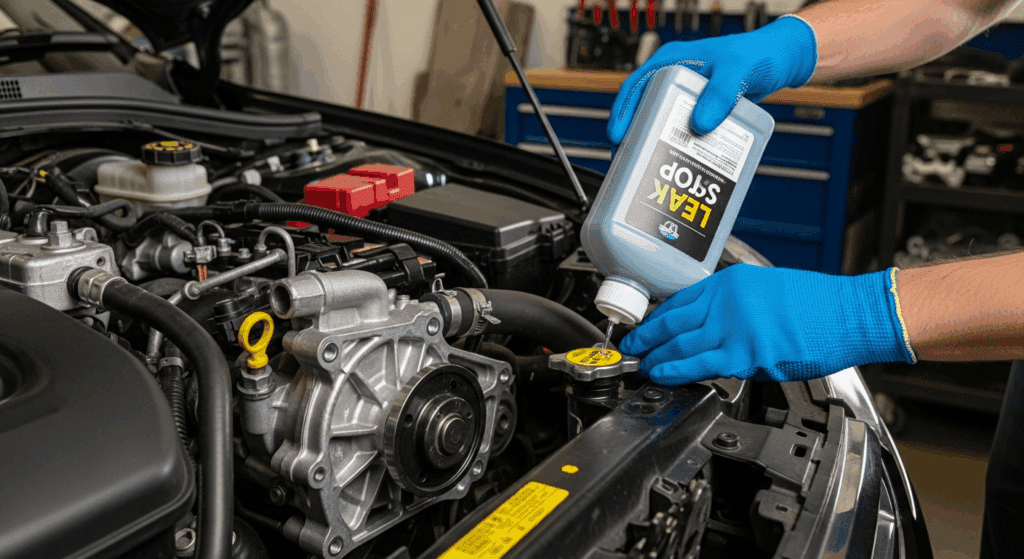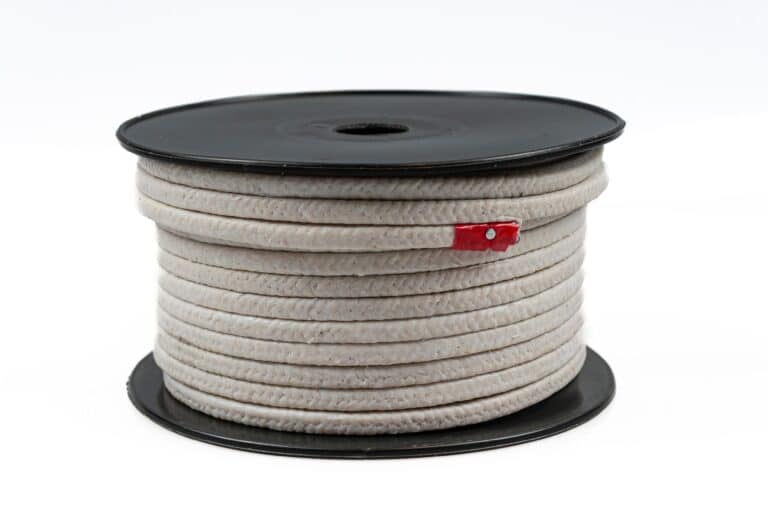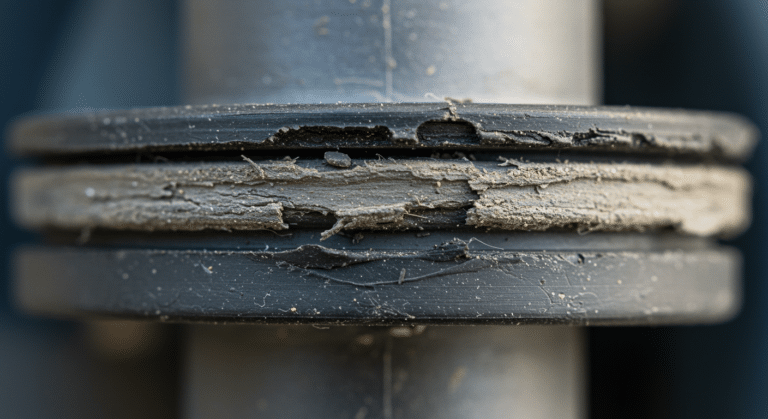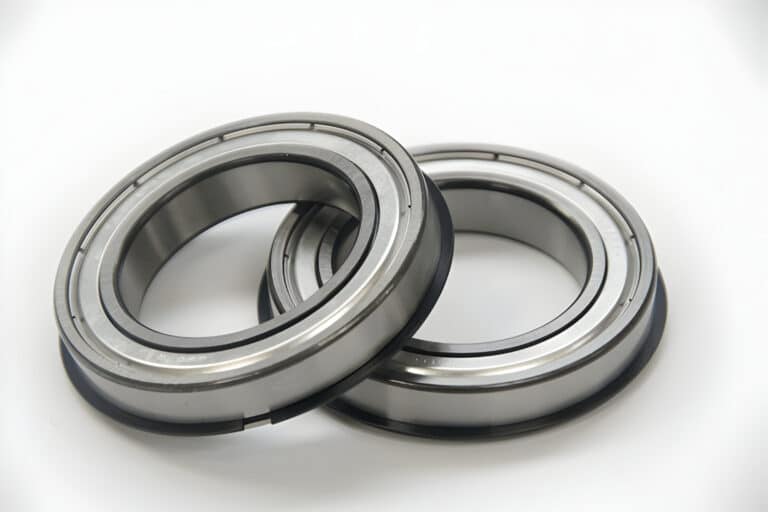You can seal a leaking water pump with stop-leak additives, RTV silicone sealant, or epoxy putty for temporary fixes, but replacement is the only permanent solution. The best temporary option depends on where your pump is leaking and how severe the damage is.
Most water pump leaks happen in three main spots: the gasket between the pump and engine block, the weep hole (which actually shouldn’t be sealed), or around the shaft seal. Each location needs a different fix.

Temporary Sealing Solutions That Actually Work
Cooling System Stop-Leak Products
Liquid stop-leak additives like Bar’s Leaks or AlumAseal work best for small weep hole leaks. They circulate through your cooling system and harden when exposed to air at the leak point.
Pour these products directly into your radiator when the engine is cool. They’ll typically hold for 2-4 weeks, giving you time to arrange a proper repair.
RTV Silicone Sealant for Gasket Leaks
High-temperature RTV (Room Temperature Vulcanizing) silicone creates a flexible seal around gasket leaks. Permatex Ultra Grey or similar products work well for this application.
Clean the leak area thoroughly with brake cleaner first. Apply a thin bead of RTV around the seeping area and let it cure for at least an hour before adding coolant.
This method can last 1-3 months if done correctly. It’s like using waterproof tape on a leaky pipe – effective but not permanent.
Epoxy Putty for Emergency Fixes
J-B Weld WaterWeld or similar epoxy putties provide the strongest temporary seal. They work best on cracks in the pump housing itself.
Drain the coolant below the leak level first. Knead the putty until it’s uniform in color, then press it firmly over the crack.
Let it cure for at least 4 hours before refilling your cooling system. This fix can last several months for small cracks.
Step-by-Step Emergency Sealing Process
- Let your engine cool completely – Hot coolant will burn you and prevent sealants from adhering properly.
- Identify the exact leak location – Clean the area and run the engine briefly to pinpoint where coolant escapes.
- Choose your sealing method – Use stop-leak for weep holes, RTV for gaskets, or epoxy for cracks.
- Prepare the surface – Clean with brake cleaner and dry thoroughly for external repairs.
- Apply your chosen sealant – Follow the specific product instructions for best results.
- Allow proper curing time – Don’t rush this step or your repair will fail immediately.
- Test carefully – Add coolant slowly and check for leaks before driving.
FAQs
Will using stop-leak void my car’s warranty?
Many manufacturers consider stop-leak products a contamination that can void cooling system warranties. Check your warranty terms first, and keep in mind that mechanics can usually tell if you’ve used these products.
Is it safe to drive with a leaking water pump?
You can drive short distances with a slow leak if you monitor coolant levels and engine temperature carefully. However, any significant leak requires immediate attention to prevent engine damage from overheating.
Can I permanently fix a water pump without replacing it?
No permanent fix exists for a failing water pump besides replacement. The internal seals and bearings deteriorate beyond repair once leaking begins, making replacement the only reliable long-term solution.




